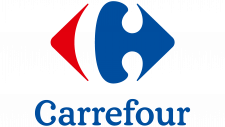Wayfair Logo
Wayfair, a global e-commerce giant, specializes in home goods, offering an expansive range of furniture, décor, and home improvement items. Dominating the U.S., Canada, the UK, and Germany, it has carved a niche in online home shopping. Founded by Niraj Shah and Steve Conine, they remain at the helm, steering the brand’s strategic decisions. Known for its digital innovation and vast product variety, Wayfair has become a household name in interior design and home furnishing solutions.
Meaning and history
Wayfair, a renowned name in e-commerce for home goods, traces its roots back to 2002. Launched by Niraj Shah and Steve Conine, it initially started as CSN Stores, an array of niche websites selling items from speakers to furniture. By 2011, CSN consolidated its 200+ sites into Wayfair.com, offering a broader spectrum of home goods.
The company’s rapid growth saw its debut on the New York Stock Exchange in 2014, with an initial public offering that further propelled its expansion. Wayfair didn’t just sell furniture; it revolutionized online shopping with tech-savvy innovations, virtual reality, and augmented reality tools for interior planning.
Throughout its journey, Wayfair maintained its primary leadership, with co-founders Shah and Conine actively involved. Their strategic moves, including international expansion to markets like the UK, Canada, and Germany, cemented Wayfair’s global presence.
Not without challenges, Wayfair faced controversies and competition. Yet, its commitment to offering varied, quality products, coupled with a focus on technological solutions for customers, solidified its stand as a leader in the online home goods marketplace. Today, Wayfair stands as a testament to e-commerce growth and the dynamic evolution of online shopping for home products.
2002 – 2011
The initial rendition of the emblem significantly differs from its contemporary counterpart and is bifurcated into two textual segments. On the left side, you’ll find the acronym “CSN”, derived from the first letters of co-founders Niraj Shah and Steve Conine. Adjacently on the right, the term “Stores” is showcased, preceded by the modest tagline “shop easy.” A delicate upright separator delineates the two parts. Every character in the branding appears in lowercase and exhibits a subtle tilt, adding a touch of dynamism to the overall design.
2011 – 2016
Post a comprehensive rebranding, aligning with the company’s foray into international terrains, the emblem’s demeanor transitioned to a more approachable vibe. The erstwhile rigidness vanished, making way for a congenial graphical representation symbolized by dual intersecting hexagons. These hexagons, distinctively elongated, flaunt diverse shades on their contrasting facets: hints of lavender, a touch of olive green, a dash of mint, and a sprinkle of sunlit yellow. At their juncture, a deep purple rhombus emerges, mirroring the hue of the brand’s moniker. Above the letter “i,” a dot’s traditional placement has been innovatively replaced by a multifaceted geometric icon, adding a contemporary twist.
2016 – Today
The present-day emblem for Wayfair showcases a distinct typeface, exuding a gentler and more curvilinear appeal compared to its predecessor. The iconic linkage between the “yf” characters remains intact, accompanied by the vibrant geometric component. This particular design element has been repositioned, now situated preceding the brand’s title. Moreover, the conventional dot atop the “i” makes its comeback. The design’s palette witnessed a transformation as well, transitioning from a rich dark purple to a more luminous shade of lilac, infusing a fresh and contemporary feel into the brand’s visual identity.














